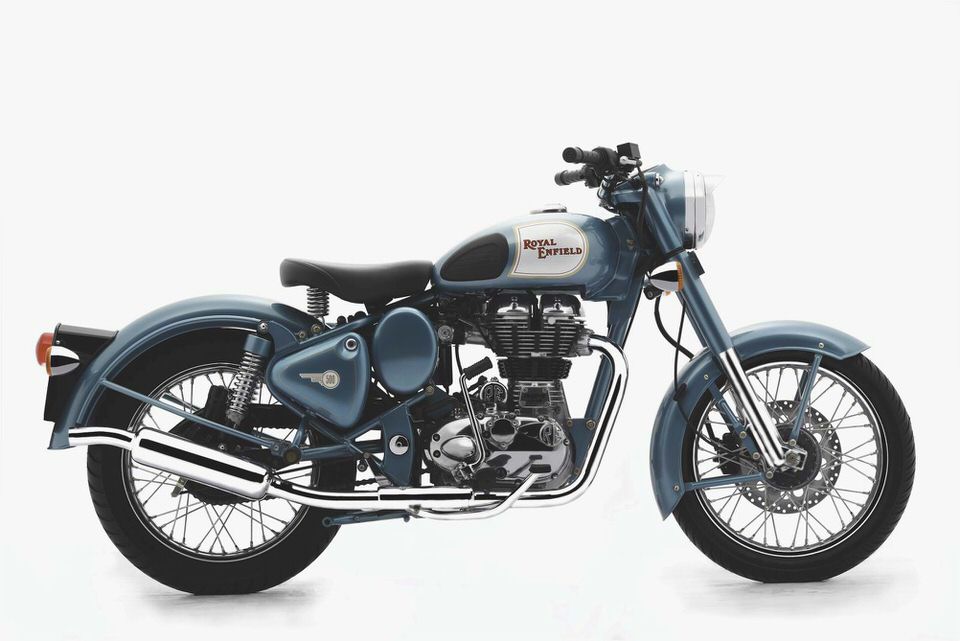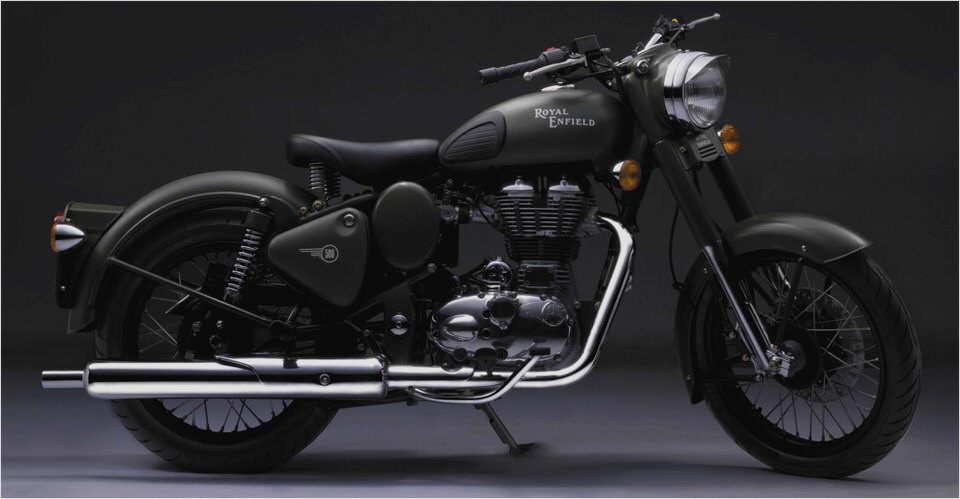
2010 Royal Enfield Bullet Classic Efi – The Empire Strikes Back
During planning of the photo shoot for the Royal Enfield Bullet Classic EFI, photographer Hugh McLean and I discussed the opening scene from Lawrence of Arabia. For readers unfamiliar with David Lean’s 1962 classic, the film begins with actor Peter O’Toole fettling over a Brough Superior SS100 in the courtyard of a rural English home.
The film sequence – in which the actor kicks the legendary motorcycle to life and rides it down a country road – is only three minutes in length, yet it is a poignant representation of the motorcycle experience. During most of the footage we can only see O’Toole’s face, which carries a sombre expression at the start of the ride. As the road opens and the bike settles into a loping gait, the folds of his face relax and a reticent smile appears, a transformation that any rider would identify as the emotional effect that riding has on our soul.
Royal Enfield’s Bullet Classic has very little in common with the Brough Superior once owned by T.E. Lawrence, but it does evoke the spirit of a by-gone era. Just like the so-called modern classics being produced by Triumph, Moto Guzzi and Harley-Davidson, the Bullet Classic taps into a nostalgic vein; buyers of these motorcycles reject modern complexity in favour of simple, non-cluttered designs that embrace the aesthetic values of our forefathers.
Previous generations of motorcyclists would certainly have been familiar with the Royal Enfield name. Founded in 1893, the original British company went out of business in 1971. However, a satellite factory the company had established in India in 1955 held on to the name and continued producing Bullets, making Royal Enfield the oldest surviving motorcycle manufacturer in the world, and the Bullet being the longest continually produced motorcycle model in history.
In 2010, Royal Enfield was re-introduced to Canada by Origin Motorcycles of Edmonton, Alberta. It’s not the first time an attempt was made to import the brand into Canada in recent years. Unlike the failed attempt in the ‘90s, Origin has the luxury of offering updated designs that promise greater reliability
The Bullet Classic with its tank-mounted knee pads, spoked wheels and solo spring-suspended seat is rich in vintage Royal Enfield DNA. It’s a modern-day, handmade evolution of a 1955 model that had first been introduced in 1948. Some would argue that little on the bike has changed since then.
In person, it’s obvious that the Bullet Classic is a bare-bones machine with a fit and finish that pays more attention to function than form. The welds on the test machine weren’t pretty, some of its hardware had already started to rust and the ignition lock looked like an afterthought that was jury-rigged in someone’s backyard. The hand-painted livery, although acceptable, was rough in a few areas such as around the fuel cap.
The instruments did little to alter the rudimentary theme of the bike; a basic speedometer incorporated an analog odometer along with a high beam, neutral and turn signal indicator. The oil and low fuel warning lights were separately housed, which together with the speedometer and ignition were part of the headlight housing.
Rider controls consisted of non-adjustable brake and clutch levers and switchgear that looked to have been sourced from a Japanese motorcycle. Although highly functional, the switchgear was the most modern looking component on the motorcycle and looked at odds with everything else on the bike. Hinting at the bike’s British heritage, the Bullet Classic came equipped with English made Avon RoadRider tires, a 90/90 – 18 on the front and a 110/80 – 18 at the rear.

Before I had even ridden the Bullet Classic, I discovered a quirk with starting the bike. It was impossible to start it or let it idle on its side stand. Lowering the side stand cut the engine immediately; however, I could start the bike and let it idle on its center stand.
I found it a little peculiar to have to either sit on the bike with the side stand up or deploy the center stand just to let it warm up. More odd, was that I could start it in gear while it was on the center stand and leave the rear wheel happily spinning at the engine’s idle speed.
Once underway, it quickly became apparent that the Bullet Classic was an immensely enjoyable motorcycle to ride, even if it wasn’t up to the standards set by modern Japanese or European machines. As an example, the transmission was intolerant of subtle control inputs; it took a deliberate prod of the gear lever to guarantee a proper shift, gently snicking the lever would often result in the transmission dropping into a false neutral.
Rather than chastise the Bullet Classic for being a less refined machine, I found that the need to exaggerate my motions only added to the bike’s charm. With its vintage appearance, low power output and unassuming demeanour it was difficult to not ride the bike without a stupid grin plastered across my face, and I found my initial critiques had begun to diminish in importance. MMM
Story by Uwe Wachtendorf
Make sure you get all of the story – subscribe today !

- Royal Enfield Bullet by OEM The Car Wallpapers
- Royal Enfield Desert Storm Review Business Line
- Brad’s Bikes – Your Thoughts
- Diesel motorcycle
- Royal Enfield C5 Classic EFI First Ride – Ultimate MotorCycling
